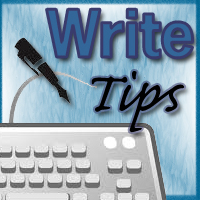Since I’ve talked a lot about assumption over the past week, it seems appropriate to point out how useful it can be in creating conflict and tension in your fiction. Assumption is deadly for unity and relationships, most of us have learned this by experience or will at some point. The same can be true of your characters. Nothing quite ups the ante like having characters miscommunicating about something. When readers realize they are doing so because of false assumptions on the part of one or both, it just ups the tension and desire to see not only a resolution but how they’ll get there.
As a device, this is quite common in interpersonal relationships. The wife sees the husband talking to a woman. They’ve been fighting. She begins suspecting him of an affair. Then various circumstances happen and the wife assumes the worst about each. Pretty soon she’s c0nvinced the affair is real and confronts her husband, who can’t imagine where she ever got the idea.
This also commonly works well in detective stories. The detectives/cops/investigators gather evidence and make certain assumptions. They choose suspects and treat them accordingly. When an assumption is proven wrong, they move on to the next suspect, but in the process, they’ve been in conflict with several suspects during the investigation as they narrow down the list.
In any scene, this device can add tension and conflict as the goals of various characters oppose each other and they begin assuming things. How they get around the assumptions and resolve the situation, creates the dramatic arc of the scene. Now, sometimes the assumptions only last for that scene, but often, it’s far more effective to have them carry over further into the story, acting again and again to misdirect and mislead the protagonist or antagonist as they work through obstacles toward their goal.
It’s a very effective device. How do you put it into action?
First, identify what each character’s goal is for a particular scene. Then identify what their goal is for the entire novel or story. All characters, even minor ones, have driving goals. Identifying them allows you to juxtapose them against each other for dramatic tension.
Second, once you’ve identified the characters’ goals, ask yourself how the goals can act as obstacles for other characters? What are some was they can lead to miscommunication, misconstruing of another character’s actions, etc.
Third, decide if the resulting conflict is just for the present scene or something to carry out over two or more scenes.
Then construct a scene wherein the character’s goals cause them to come into conflict with each other.
If supporting characters embrace the assumptions of one or the other, this can only up the tension. For example, the detective who suddenly finds himself confronting an angry crowd who support one key leader’s assumptions. Or the knight up against angry villagers when he takes on one of their own. None of the supporting characters must have exactly the same goal as either key player here, just aligning themselves on one side or another is more than enough.
The result is a rice in tension that helps pacing and drives to story forward, making readers want to know what happens, how it happens, etc.
There’s nothing quite as effective for drawing in readers as a conflict which deepens despite its apparent simplicity in clever ways due to the characters’ actions and assumptions. When they are characters we care about, especially, these situations remind us of similar situations in our own life experiences. And we feel empathy for the characters experiencing them because we know how difficult they were to deal with ourselves. If the characters get themselves into more and more trouble with further assumptions, that just makes the tension all the stronger, creating more and more questions readers can’t wait to see answered as the story continues.
This is a device which works well in any genre or dramatic setting, too. It’s often something storytellers use without being aware of it. But building awareness allows you to be more deliberate in how you employ such a tool and to use it more fully when you do so.
What are some devices you enjoy using in fiction? What are some devices you’ve discovered through another author’s work? I’d love to hear your thoughts.
For what it’s worth…





